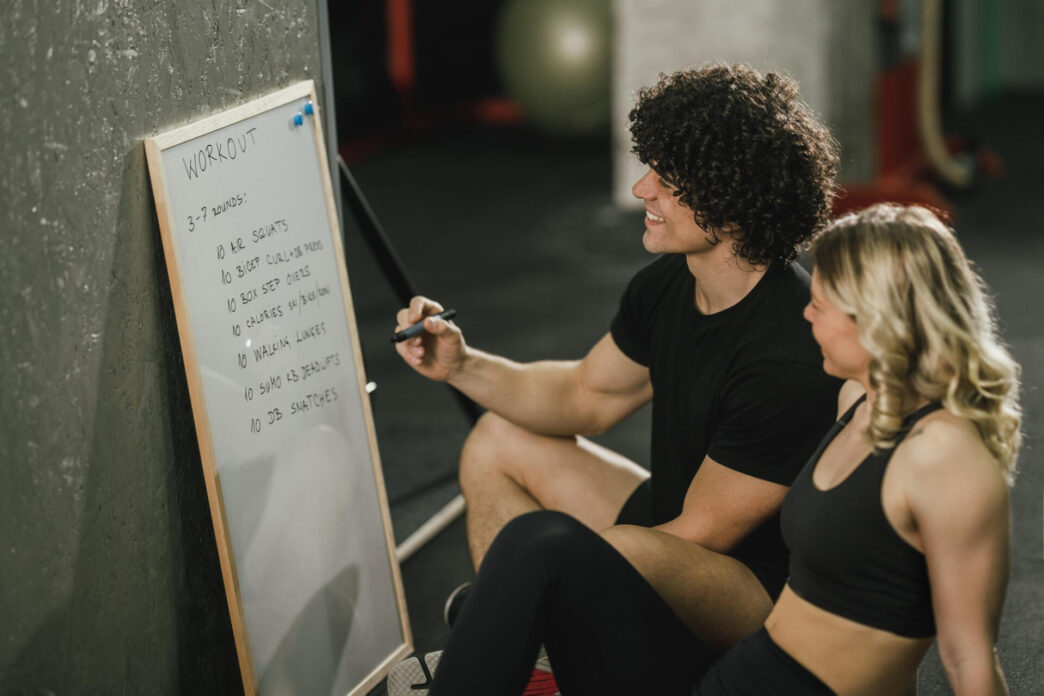Why Trigger Cues Are the Secret to Habit Consistency
Building better habits isn’t about willpower—it’s about design. If you’ve ever struggled to make a habit stick, you’re not alone. Most people start strong and lose momentum because they rely on motivation, which is unreliable. The real difference-maker? Trigger cues—those small, intentional signals that prompt you to act without overthinking.
We live in a world of constant distraction, yet some people manage to maintain daily meditation, consistent workouts, and solid morning routines. How? They’ve embedded these habits into their lives using cues that make action automatic. Instead of waking up and asking, “Should I work out today?”, they simply follow a built-in system that makes the answer effortless.
“You do not rise to the level of your goals. You fall to the level of your systems.”
James Clear, Atomic Habits
This article explores how to use trigger cues for habit consistency—the small changes that produce big results. You’ll learn:
✔️ What kinds of cues influence behavior most effectively
✔️ How to create cues that actually work in your real life
✔️ How to avoid relying on motivation or memory
✔️ What to do when routines get disrupted
✔️ And how world-class performers, everyday achievers, and even companies build habits that last
Whether your goal is to drink more water, write every morning, or cut screen time, using trigger cues strategically is the missing piece you’ve been looking for.
Let’s break down the science, psychology, and practice behind habits that actually stick—and make consistency easier than ever.
Understanding Trigger Cues
What Are Trigger Cues?
Trigger cues are specific signals—either external or internal—that initiate a habitual behavior. They serve as reminders, helping to bridge the gap between intention and action. Instead of relying on conscious effort or motivation, trigger cues automate habits by associating them with predictable events or surroundings.
Think about how you automatically brush your teeth after waking up or check your phone when you hear a notification. These are habits formed through consistent cue-response relationships. Over time, your brain recognizes the cue and initiates the behavior without requiring conscious thought.
The Science Behind Habit Formation and Cues
Trigger cues are a fundamental part of the habit loop, a concept popularized by Charles Duhigg in The Power of Habit. The habit loop consists of three main components:
- Cue (Trigger): A signal that prompts a habit.
- Routine (Behavior): The action performed after the cue.
- Reward: A positive reinforcement that strengthens the habit.
For example:
- Cue: Walking into the kitchen in the morning.
- Routine: Making a cup of coffee.
- Reward: Feeling more awake and alert.
This loop repeats until the habit becomes automatic. Neuroscience research shows that habits form in the basal ganglia, a part of the brain responsible for automatic behaviors. Once a habit is deeply ingrained, it requires minimal mental effort to execute.
Types of Cues That Influence Behavior
Not all cues are equally effective. Understanding the different types of triggers helps in choosing the most reliable ones for building consistency. The five most common habit cues are:
- Time-Based Cues – Scheduled habits (e.g., taking vitamins every morning at 8 AM).
- Location-Based Cues – Habits tied to physical environments (e.g., reading before bed).
- Emotional Cues – Feelings that trigger habits (e.g., stress leading to snacking).
- Preceding Action Cues – One habit triggering another (e.g., flossing after brushing teeth).
- Environmental Cues – External signals like alarms, sticky notes, or visual reminders.
By selecting and reinforcing the right cues, we can automate positive habits and make consistency effortless. Next, we’ll explore how each type of cue can be used effectively in real-life scenarios.

Types of Effective Trigger Cues
Understanding the different types of trigger cues is essential for designing habits that stick. Some cues work better than others, depending on the habit and individual preferences. Below, we’ll explore the five most powerful types of trigger cues and how to use them effectively.
Time-Based Cues: Using Schedules to Reinforce Habits
Time-based cues involve linking a habit to a specific time of day or a recurring event. These cues work well because our brains naturally align with daily rhythms, making it easier to develop predictable habits.
Examples:
- Drinking a glass of water right after waking up.
- Meditating every evening at 9 PM.
- Journaling before bed.
💡 How to make it work:
- Set reminders using alarms or calendar notifications.
- Align the habit with an existing fixed event (e.g., after lunch, before leaving work).
- Keep your schedule consistent—habits take longer to form if done sporadically.
Location-Based Cues: Associating Habits with Specific Places
Environmental triggers can be powerful because we subconsciously link certain locations with behaviors. A change in environment can either reinforce or disrupt habits.
Examples:
- Stretching every time you enter the gym.
- Reading in a designated chair instead of in bed.
- Placing running shoes by the door to encourage morning exercise.
💡 How to make it work:
- Designate specific locations for habits (e.g., only work at a desk, not in bed).
- Rearrange your environment to promote the habit (e.g., keep a book on your nightstand).
- Avoid cues that trigger bad habits (e.g., removing junk food from sight).
Emotional Cues: Leveraging Feelings to Trigger Positive Habits
Our emotions strongly influence behavior. Emotional cues can be both beneficial and harmful, depending on the habits they trigger.
Examples:
- Practicing gratitude when feeling stressed to shift focus.
- Exercising when feeling anxious instead of doom-scrolling on social media.
- Calling a friend when feeling lonely instead of binge-watching TV.
💡 How to make it work:
- Identify emotional patterns that lead to negative habits.
- Replace automatic bad responses with healthier alternatives.
- Use self-awareness techniques like journaling to recognize triggers.
Preceding Action Cues: Habit Stacking and Chaining Behaviors
One of the most effective ways to build habits is through habit stacking—attaching a new habit to an existing one. This method works because the brain already associates the original habit with action.
Examples:
- Brushing your teeth right after flossing.
- Doing five push-ups after pouring your morning coffee.
- Reviewing daily goals after opening your laptop.
💡 How to make it work:
- Use the “After I [existing habit], I will [new habit]” formula.
- Ensure the existing habit is already solid and consistent.
- Start with small actions before increasing complexity.
External Environmental Cues: Visual Reminders, Alarms, and Prompts
External cues act as physical or digital reminders, helping reinforce habits until they become automatic.
Examples:
- Setting a daily alarm for meditation.
- Using sticky notes with motivational reminders on your desk.
- Keeping a water bottle on your desk to encourage hydration.
💡 How to make it work:
- Place cues in visible locations (e.g., workout clothes near your bed).
- Use apps or habit-tracking tools for digital reinforcement.
- Gradually reduce reliance on external cues as habits become internalized.
Which Cues Work Best?
Each person responds differently to cues, and the most effective triggers depend on the individual and the habit. A combination of different cues often yields the best results.
Cue Type | Best For | Example |
|---|---|---|
Time-Based | Routines & schedules | Reading before bed |
Location-Based | Context-dependent habits | Gym workouts |
Emotional-Based | Mindfulness & stress habits | Deep breathing when anxious |
Preceding Action | Habit stacking | Flossing after brushing teeth |
External Cues | Reminders & consistency | Alarm for meditation |
By leveraging the right mix of cues, you can design habits that fit seamlessly into your life. Next, we’ll discuss how to strategically create and strengthen trigger cues to ensure lasting habit formation.

How to Design Powerful Trigger Cues
Trigger cues can be incredibly effective for habit formation, but they need to be well-designed to work consistently. Many people fail to build habits because they use weak or unreliable cues. Below, we’ll explore strategies to create strong, actionable triggers that ensure effortless consistency.
1. Identifying the Right Cues for Different Habits
Not all cues work for every habit. A good cue should be:
✔️ Specific – Clear and direct, not vague.
✔️ Consistent – Tied to something that happens regularly.
✔️ Actionable – Easy to notice and respond to.
🚫 Weak cue example: “I’ll work out when I feel like it.”
✔️ Strong cue example: “I’ll work out right after brushing my teeth at 7 AM.”
How to identify the best cues for a habit:
- Observe when and where the behavior naturally fits into your daily routine.
- Choose cues that are already part of your life (e.g., existing habits, fixed times).
- Test different cues and adjust based on what works best.
2. Strengthening Cue-Response Connections
For a habit to stick, the connection between the cue and the habit needs to be strong. If there’s too much delay or ambiguity, the habit is less likely to form.
🔹 Make the response immediate – The habit should follow the cue within seconds, not minutes or hours.
🔹 Use sensory reinforcement – Associating cues with visual, auditory, or physical reminders makes them stronger.
🔹 Repeat the habit in the same context – Consistency in time and place builds stronger associations.
🚀 Example:
- If you want to start journaling, place a notebook on your pillow so you see it before bed (strong visual cue).
3. Avoiding Weak or Ineffective Cues
Some cues don’t work well because they are:
🚫 Too vague – “I’ll eat healthy today” (lacks a clear trigger).
🚫 Too infrequent – “I’ll meditate when I remember” (not tied to a fixed event).
🚫 Too weak – “I’ll exercise when I feel like it” (relies on motivation).
🔹 Solution: Tie the habit to an existing strong event, such as:
- “After I drink my morning coffee, I will write down three things I’m grateful for.”
- “Before I shower at night, I will stretch for five minutes.”
4. The Role of Repetition in Reinforcing Cues
Habits don’t form overnight. According to research, it takes an average of 66 days to establish a habit, depending on complexity. The more frequently a habit is repeated in response to a cue, the stronger the neural connection becomes.
💡 Key repetition strategies:
- Start small – A habit that takes 30 seconds is easier to stick with.
- Keep the cue consistent – Doing it at the same time/place helps.
- Use habit tracking – Seeing daily progress keeps motivation high.
📌 Example: Want to build a reading habit? Start with just one page every night before bed. Over time, your brain will associate bedtime with reading, making it automatic.
Making Trigger Cues Work for You
Designing effective cues is the key to effortless habit formation. By choosing specific, reliable, and actionable triggers, strengthening the cue-response connection, and ensuring consistent repetition, you can make positive habits feel second nature.
Next, we’ll explore how to build a long-term system that makes consistency easier than ever. 🚀
References and Inspirational Resources
- Duhigg, Charles. The Power of Habit: Why We Do What We Do in Life and Business. Random House.
- Clear, James. Atomic Habits: An Easy & Proven Way to Build Good Habits & Break Bad Ones. Avery.
- Fogg, B.J. Tiny Habits: The Small Changes That Change Everything. Houghton Mifflin Harcourt.
- Psychology Today – Articles on habit formation and behavior change.
- The American Journal of Psychology – Research on habit loops and behavioral conditioning.
- Stanford Behavior Design Lab – Insights on cue-based behavior design and habit systems.















